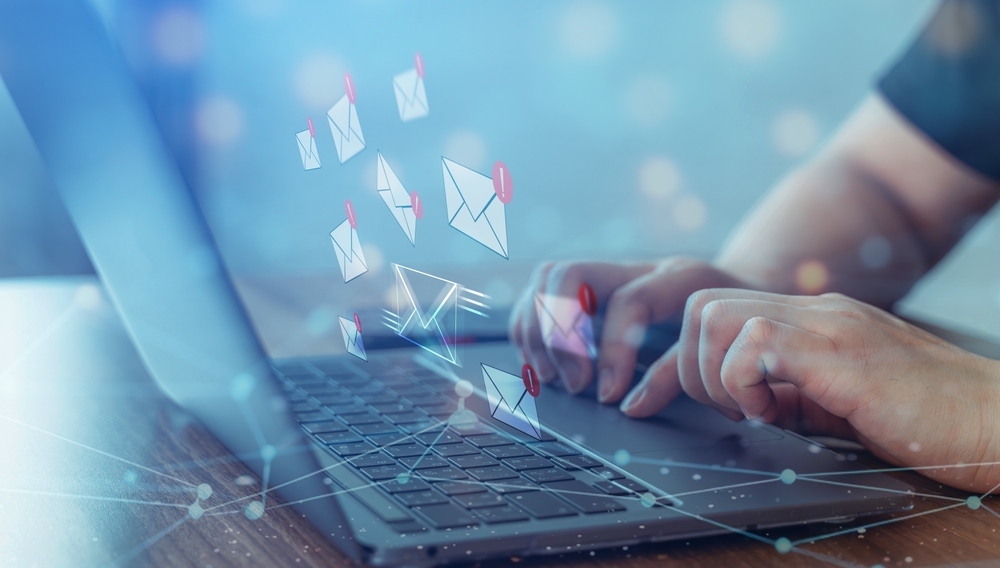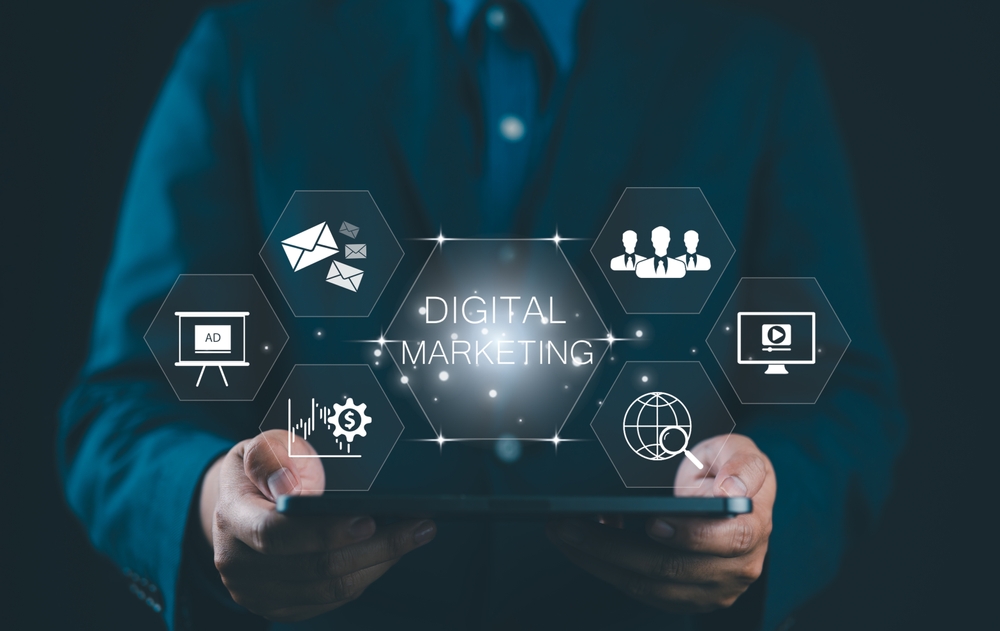Even into 2025, email marketing is likely to remain one of the most vital components of digital communication, providing returns on investment and engagement opportunities above any other format. Such a scenario drives an individual to the scope of email marketing in harnessing its power. With this piece, learn what is currently trending in email marketing, sharing statistics and what’s to come.
The Current Landscape of Email Marketing
Email has not become a dead piece of steel right from the digital marketing avenue of trade. Statistically, it still proves effective:
- Email Users Worldwide: In 2023, there were still roughly 4.37 billion email users across the globe, a figure projected to increase to 4.89 billion by the year 2027.
- Daily EMail: They even predict an approximate 361.1 billion emails sent globally in 2024, and it is growing even further into the next few years.
- Return on Investment: Email marketing is said to have a huge return of investment of $36 for every dollar spent, thus creating a 3600% rate of return.
- Consumer Influences: Marketing has brought about approximately 60% of purchases by the consumer through an email.
Emerging Trends in Email Marketing
As the year 2025 unfolds gradually, it will be shaped by many emerging trends that will alter the face of email marketing. The following are the most prominent trends making a difference in email marketing:
1. Integration of Artificial Intelligence (AI)
This is revolutionizing email marketing and taking it toward a delivery that is fast and superior. Rather, marketers rather use AI for:
- Copy Creation: Creating great copy that is compelling and setting well-suited templates-totally writing personalized content-all vastly speed up the creation of a campaign.
- Automation: It’s about connecting so much more than just the easy tasks-of course it does that-things like segmentation and tracking performance-and let marketers spend their time on strategy building.
2. Enhanced Personalization
In 2025, hyper-personalization is beyond the simple use of first names to customize; it involves looking at the customer’s purchase history or online behavior to create that specific profile.
- Behavior Targeting: Employing Data about a user’s activity to design and deliver contents based on what suits that particular person.
- Dynamic Content: The use of live data inputs for changing the contents of a mail on the user’s present activity and interest.
3. Privacy and Data Security
With increasing concerns over data privacy, email marketers are:
- Stricter Authentication: Implementing robust authentication protocols to enhance email security and build trust with recipients.
- Compliance: Adhering to global data protection regulations to maintain brand reputation and avoid legal repercussions.
4. Interactive and Accessible Design
To boost engagement, emails are becoming more interactive and accessible:
- Interactive Elements: Incorporating features like carousels, surveys, and embedded videos to enhance user engagement.
- Accessibility: Designing emails that are accessible to all users, including those with disabilities, to expand reach and inclusivity.
5. Sustainability
Environmental consciousness is influencing email marketing strategies:
- Eco-friendly Campaigns: Adopting practices that reduce carbon footprint, such as minimizing email size and optimizing send frequency.
Future Projections
Looking ahead, several developments are poised to shape the future of email marketing:
1. Advanced AI Capabilities
AI is expected to play a more significant role in:
- Predictive Analysis: Anticipating customer behavior to send proactive and timely emails.
- Enhanced Personalization: Delivering even more tailored content by analyzing vast amounts of data to understand individual preferences deeply.
2. Omnichannel Integration
Email marketing will increasingly integrate with other channels to provide a seamless customer experience:
- Unified Messaging: Ensuring consistent communication across email, social media, SMS, and other platforms.
- Cross-Channel Analytics: Analyzing data across channels to gain a holistic view of customer interactions and preferences.
3. Greater Emphasis on Data Privacy
As data privacy concerns continue to grow, marketers will need to:
- Strengthen Data Protection Measures: Implementing advanced security protocols to protect customer data.
- Enhance Transparency: Clearly communicating data collection and usage practices to build trust with consumers.
The Future of Email Marketing: Continued Insights and Innovations
1. Embrace Hyper-Segmentation
Hyper-segmentation involves dividing your email list into smaller, highly specific segments based on various parameters such as behavior, location, and preferences. This level of granularity allows for better targeting and engagement.
- Behavior-Based Campaigns: Send emails based on a subscriber’s interaction history, such as clicking on a product link or abandoning a cart.
- Geographic Personalization: Tailor content to specific regions, incorporating local events, weather, or culture into your campaigns.
Hyper-segmentation increases open rates, click-through rates, and conversions by delivering precisely what the recipient finds valuable.
2. Focus on Mobile Optimization
With more than half of emails opened on mobile devices, optimizing for mobile is no longer optional. The future demands:
- Responsive Design: Emails must adapt seamlessly to different screen sizes.
- Thumb-Friendly Navigation: Buttons and links should be easy to click on small screens.
- Shorter, Scannable Content: Mobile users prefer concise messages with clear CTAs.
Marketers who prioritize mobile optimization will capture the attention of a fast-paced, on-the-go audience.
3. Data-Driven Decision Making
Email marketing platforms are increasingly providing robust analytics that help fine-tune campaigns:
- Predictive Metrics: Tools like predictive open and click rates allow marketers to adjust strategies proactively.
- A/B Testing at Scale: Testing subject lines, layouts, and send times across larger datasets ensures data-backed decisions.
- Real-Time Insights: Dashboards displaying up-to-the-minute performance metrics enable agile adjustments.
Leveraging data effectively will become a critical competitive advantage.
4. Sustainability in Email Marketing
As businesses grow more eco-conscious, email marketers must adopt sustainable practices:
- Email Recycling: Reusing and repurposing effective campaigns with updated content.
- Energy-Efficient Tools: Opting for platforms that minimize server usage and energy consumption.
- Mindful Design: Reducing image sizes and optimizing code to ensure lighter emails that consume less bandwidth.
Sustainability isn’t just about reducing carbon footprints; it also aligns your brand with environmentally conscious consumers.
Advanced Technologies Shaping Email Marketing
1. Blockchain for Security
Blockchain technology is expected to bring a new level of security and transparency to email marketing. This includes:
- Email Verification: Verifying the authenticity of emails to prevent phishing and fraud.
- Data Integrity: Ensuring subscriber data is secure and immutable.
As trust becomes a significant factor in consumer choices, blockchain integration will provide a competitive edge.
2. Voice-Activated Email Interactions
With the rise of voice assistants like Alexa, Google Assistant, and Siri, emails optimized for voice commands will become increasingly relevant.
- Voice-Friendly Content: Structuring emails to enable recipients to hear summaries or key details through voice reading.
- Interactive Commands: Allowing users to respond or take actions (e.g., RSVP or buy) using voice commands.
This innovation will particularly appeal to multitasking consumers.
3. Augmented Reality (AR) in Emails
AR will transform static emails into immersive experiences:
- Virtual Try-Ons: Retailers can include AR features allowing recipients to visualize products, such as clothing or furniture, in their spaces.
- Interactive Demos: Tech companies can provide 3D demonstrations of gadgets or apps directly within emails.
Such dynamic content will elevate engagement and drive conversions.
Challenges on the Horizon
While email marketing offers immense opportunities, there are challenges to address:
1. Rising Consumer Expectations
Consumers expect highly personalized, relevant, and timely content. Failure to meet these expectations can lead to unsubscribes and diminished ROI.
2. Increasing Competition
With more businesses recognizing the power of email marketing, inboxes are becoming crowded. Marketers must innovate to stand out without overwhelming recipients.
3. Regulatory Complexity
Evolving data protection laws like GDPR, CCPA, and others will require businesses to stay compliant while maintaining effective email strategies.
Key Takeaways for Marketers
1. Adopt a Customer-Centric Approach
Understanding and addressing customer pain points, preferences, and behaviors should be the cornerstone of every campaign.
2. Invest in Continuous Learning
Stay updated with the latest trends, tools, and technologies in email marketing to remain competitive.
3. Measure, Optimize, Repeat
Regularly analyze campaign performance and apply insights to refine strategies for ongoing improvement.
4. Embrace Innovation
Be an early adopter of emerging trends and technologies like AI, AR, and blockchain to maintain a cutting-edge approach.
Conclusion
The future of email marketing is bright, dynamic, and full of potential. By embracing technological advancements, prioritizing personalization, and addressing consumer needs, businesses can create impactful campaigns that drive growth and strengthen customer relationships.
Email marketing isn’t just surviving in the digital era—it’s thriving and evolving as one of the most effective channels for building meaningful connections in an increasingly digital world.








